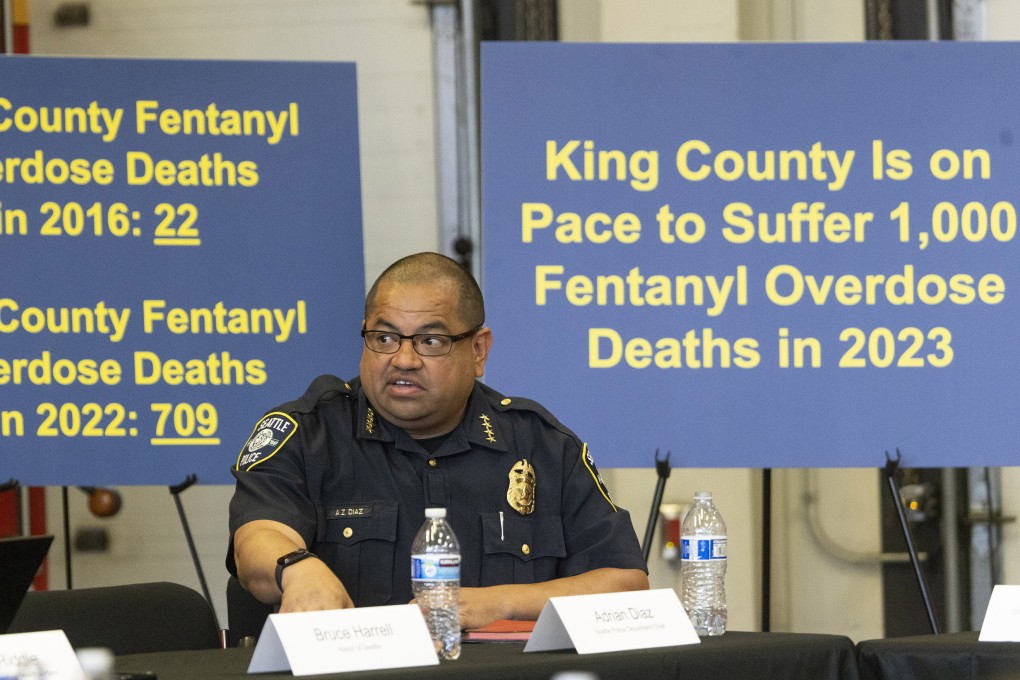Advertisement
Outside In | Blaming China for fentanyl threat won’t solve America’s opioid crisis
- The ease with which synthetic drugs like fentanyl can be made, transported and sold has led to an array of small, scattered traffickers
- The US can’t solve its opioid crisis on its own, and as long as its cold war with China continues, effective cooperation is unlikely
Reading Time:3 minutes
Why you can trust SCMP
11

In a world where decoupling, de-risking, near-shoring and a wide range of other national security measures are seen as needed to fend off the existential challenge from China, it is perhaps not surprising to see blame for a deepening US drug abuse crisis placed squarely at Beijing’s door.
US Attorney General Merrick Garland recently laid charges against eight Chinese companies and 28 of their people for trafficking fentanyl precursor chemicals to the US. As Drug Enforcement Administration administrator Anne Milgram noted: “Fentanyl is the deadliest drug threat our nation has ever faced.”
In 2021 and 2022, about 107,000 Americans died each year from drug overdoses, mostly due to fentanyl – more than twice the gun deaths recorded. This has pushed down life expectancy in the US. The most short-lived 10 per cent of Americans die by 41 on average, according to research by the Financial Times. This compares with 60 in Japan and Switzerland, and 55 in France, Germany and Britain. One in 25 American five-year-olds will die before they are 40.
Of course, drug abuse is a problem worldwide. Out of the 296 million drug users globally, 39.5 million suffer from drug use disorders, according to the UN World Drug Report. Cannabis is most commonly consumed, but opioids are the source of two-thirds of drug-related deaths.
As with gun deaths, the US stands alone in the depth of its drug abuse problems: dating back to the 1990s, the “profit motive of the pharmaceutical industry remains ever present”, said Professor Howard Koh at Harvard’s TH Chan School of Public Health.
But the role of fentanyl and related opioids in transforming a grim and damaging social problem into an alarming surge in deaths is also clear: when heroin is mixed with fentanyl, a synthetic opioid 50 to 100 times more powerful, horrible consequences seem inevitable.
Advertisement
